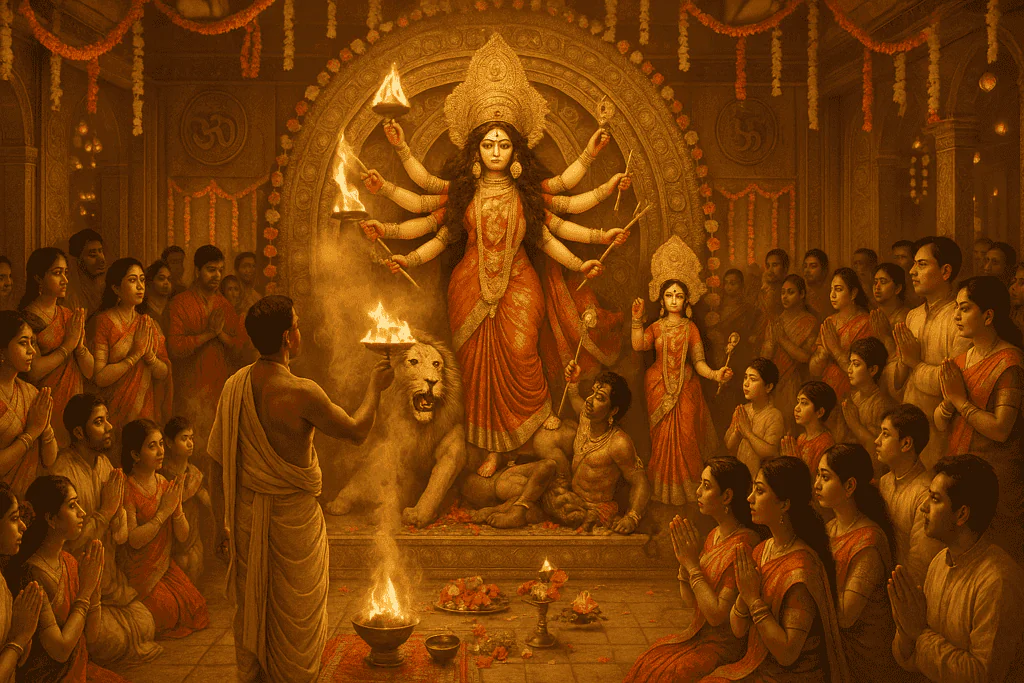
Durga Puja 2025: Celebrating the Victory of Goodness, Power, and Culture
Durga Puja stands as one of the most magnificent festivals of India, drawing together communities, creativity, devotion, and joy in an unparalleled celebration of the divine feminine. In 2025, Durga Puja will be observed with immense fervor, spanning from 21st September to 2nd October. Across India and in Indian communities worldwide, the festival merges age-old rituals with vibrant art, making it not only a spiritual occasion but also a cultural extravaganza.
The Significance of Durga Puja
At its core, Durga Puja celebrates the victory of Goddess Durga over the demon Mahishasura—a powerful symbol of good triumphing over evil, and of strength, resilience, and compassion embodied by the divine feminine. The festival also coincides with the agricultural season, reflecting gratitude to natural forces and the cycles of life and harvest. For many, this is a time for personal renewal, family reunion, and community bonding.
Durga Puja 2025: Key Dates and Schedule
The Durga Puja schedule for 2025 is as follows:
- Mahalaya: 21st September (Sunday) – marks the invocation of the goddess.
- Maha Sashthi: 28th September (Sunday) – the grand unveiling and welcoming of Durga idol, along with Bodhan and Kalparambha rituals.
- Maha Saptami: 29th September (Monday) – includes the sacred ‘Nabapatrika’ or ‘Kola Bou’ bath, symbolically bringing nine plants together as a living form of the goddess.
- Maha Ashtami: 30th September (Tuesday) – the most revered day, known for Sandhi Puja which marks Durga’s decisive victory, and Kumari Puja celebrating divinity in young girls.
- Maha Navami: 1st October (Wednesday) – final offerings and community bhog.
- Vijaya Dashami: 2nd October (Thursday) – the emotional farewell and immersion of goddess idols, symbolizing her return to Mount Kailash.
Rituals and Religious Practices
Durga Puja is distinguished by its elaborate, disciplined rituals that connect the physical, spiritual, and communal realms:
- Bodhan and Kalparambha (Sashthi): The formal invocation and installation of the idol, signifying Durga’s arrival on earth.
- Nabapatrika Snan (Saptami): Ritualistic bathing of nine plants that represent different forms of the goddess, tied together with a banana plant as Kola Bou.
- Kumari Puja: Celebrating young girls as living embodiments of the Mother Goddess.
- Sandhi Puja (Ashtami/Navami): The most sacred hour marking Durga’s slaying of Mahishasura, performed at the junction of two lunar days with 108 lotuses and lamps.
- Maha Arti and Bhog: Collective offerings and devotional songs unite communities, often followed by distributing ‘bhog’ (sanctified food).
- Sindoor Khela (Dashami): Married women smear red vermilion, wishing for long and happy married life, before the immersion processions begin.
- Visarjan: The beautiful yet poignant ritual of immersing the idol, signifying both an end and a promise of next year’s return.
Celebrations Across Regions
West Bengal (Kolkata)
Kolkata leads the grandeur with hundreds of themed ‘pandals’ (decorated temporary structures), stunning idol artistry, and community events. Iconic locations like Kumartuli, Bagbazar, and College Square set the stage for a fusion of devotion, art, and social gathering.
Odisha
Idols made of silver and gold (Chandi/Sona Medha), especially in cities like Cuttack, are hallmark traditions. The entire state lights up with cultural programs and temple fairs.
Assam and Tripura
Here, the festival is marked by melodic bhajans, traditional dances, and lamp-lit ceremonies. Community involvement remains deep, with food, music, and theatre binding everyone together.
Metro Cities & Abroad
Major Indian cities and global metropolises such as London, New York, and Toronto witness Durga Puja organized by expat communities. The traditions of anjali (flower offerings), prasad (holy food distribution), and cultural events thrive, connecting the diaspora to their roots.
The Cultural Extravaganza
Durga Puja is not just about religious observance. It is a festival of art, music, dance, literature, and community life:
- Dhunuchi Naach: Vigorous dance with incense burners to the beats of Bengali ‘dhaak’ drums.
- Theatre and Literature: Stage performances, plays (Mahishasura Mardini), and poetry readings fuel cultural creativity.
- Food Festivals: Community feasts, street foods, and bhog (offered and then communal food) celebrate culinary traditions.
- Pandal Hopping: Visiting various pandals to appreciate artistry and design becomes a social highlight.
- Dress and Decor: New clothes, elaborate lighting, and floral decorations enhance the festive spirit.
A Sacred Reflection
The spiritual message of Durga Puja is beautifully encapsulated in the ancient mantra:
“Ya Devi Sarvabhuteshu Shakti Rupena Samsthita, Namastasyai Namastasyai Namastasyai Namo Namah.”
(A reverent salutation to the goddess who dwells in all beings as power.)
Conclusion: Uniting Devotion, Creativity, and Community
Durga Puja 2025 will once again demonstrate why it is much more than a religious festival—it is a living tradition where spiritual depth, creative artistry, and social unity meet. From the solemnity of rituals to the exuberance of dance and celebration, the blessings of Goddess Durga are believed to bring a year of strength, joy, and prosperity.
Whether in India’s bustling cities, rural towns, or distant overseas communities, Durga Puja brings people together in a powerful shared experience—reminding everyone of the triumph of good and the eternal source of feminine power.
May the spirit of Durga Puja 2025 fill hearts with hope, strength, and harmony!
